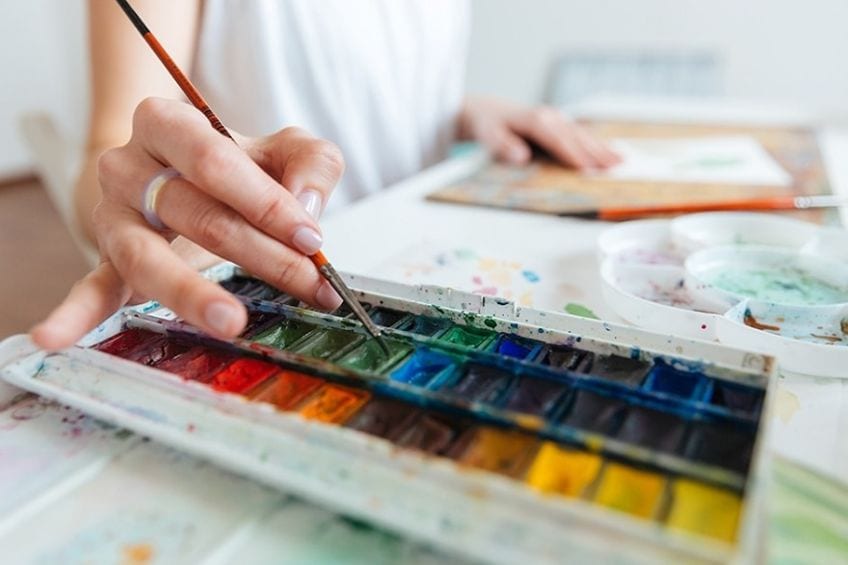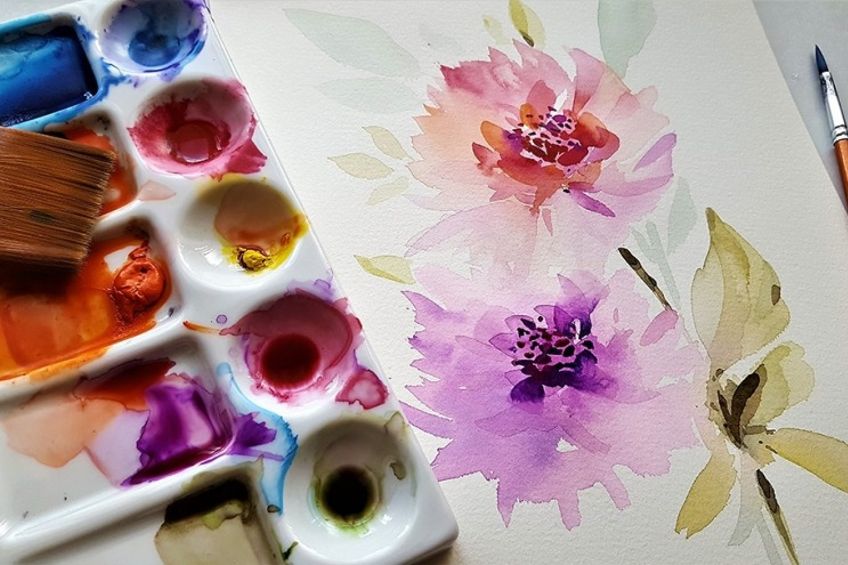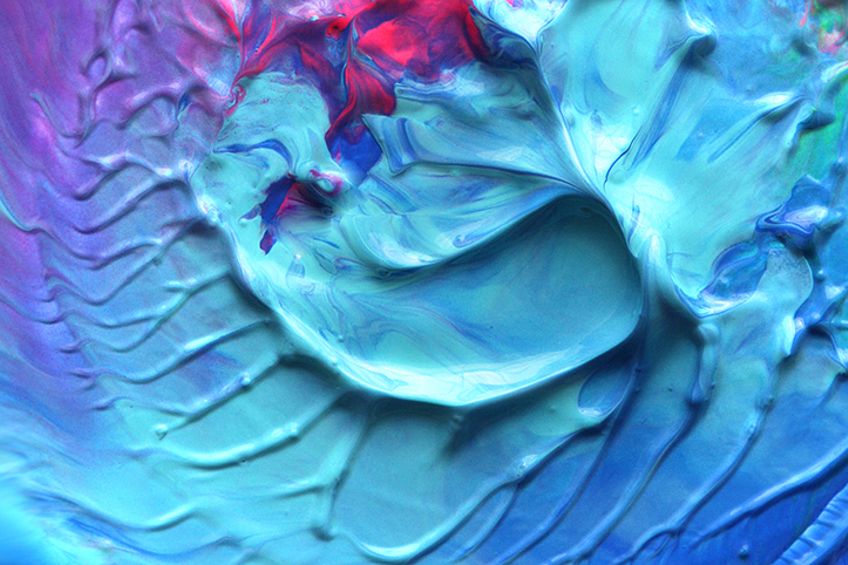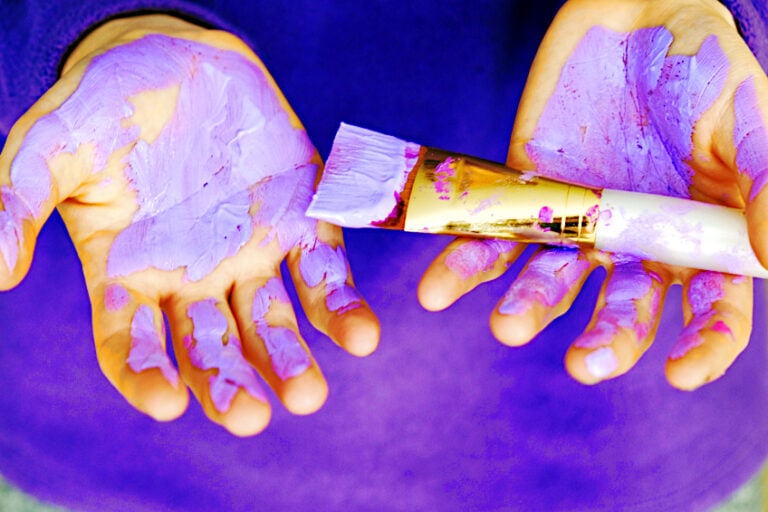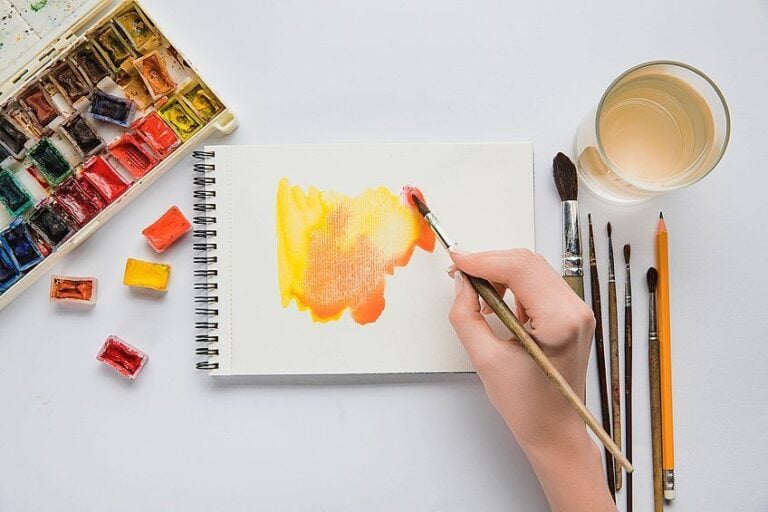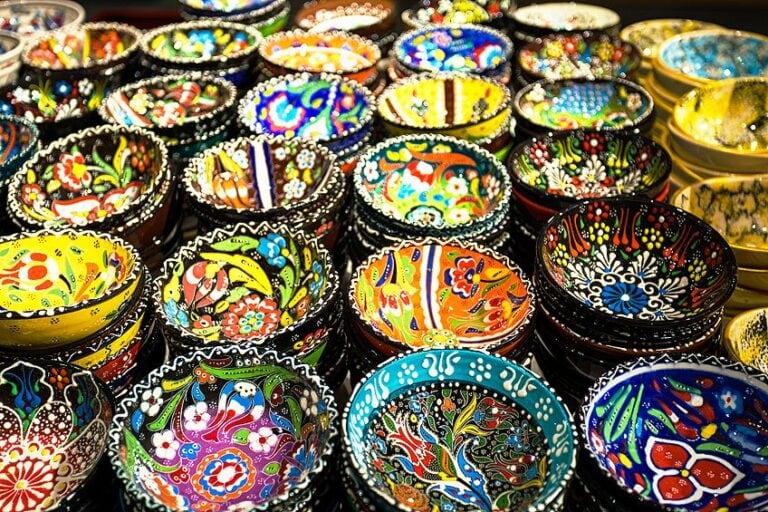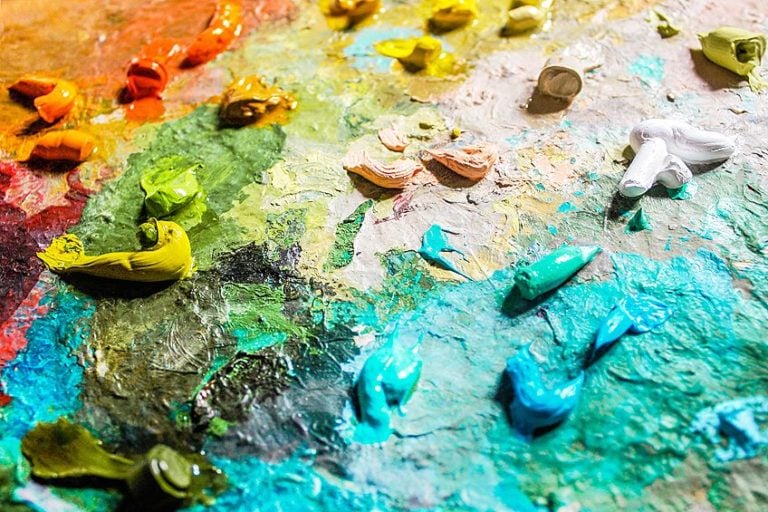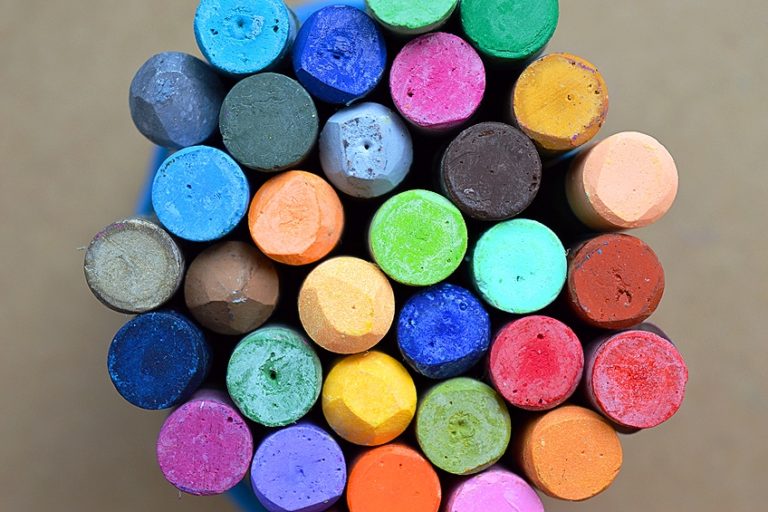Watercolor vs. Acrylic – Exploring Watercolor and Acrylic Paints
This post may contain affiliate links. We may earn a small commission from purchases made through them, at no additional cost to you.
These days we are spending a lot of time at home, which means there is more need for personal entertainment that can be done from the comforts of your slacks. Painting has been on the list of things you would like to try, so why not now? But, you have no idea which medium would be a good start for you and you are currently deliberating the pros and cons of watercolor vs acrylic paint. Is there such a difference between watercolor and acrylic mediums? In this tutorial, we will discuss the difference between watercolor and acrylic, and the different kinds of watercolor art or acrylic art that you can make. Keep reading for some extensive knowledge on watercolor vs acrylic for beginners, and even what watercolor over acrylic paint looks like, but generally acrylic vs watercolor.
Table of Contents
Differences Between Watercolor and Acrylic Paint
The only things that watercolor and acrylic paints have in common are the pigments that make the different colors and the fact that they are water-soluble. The binding medium being the game-changer in their consistencies and overall properties. We have highlighted some of the differences between watercolor and acrylic in a few points below.
The Properties of Watercolor Paint
In this watercolor vs acrylic for beginners tutorial, we will begin to discuss the properties of watercolor paints. Natural gum arabic is the binder that holds the pigments together, but glycerine and other preservatives make their presence in changing the color of the paint, as well as its viscosity.
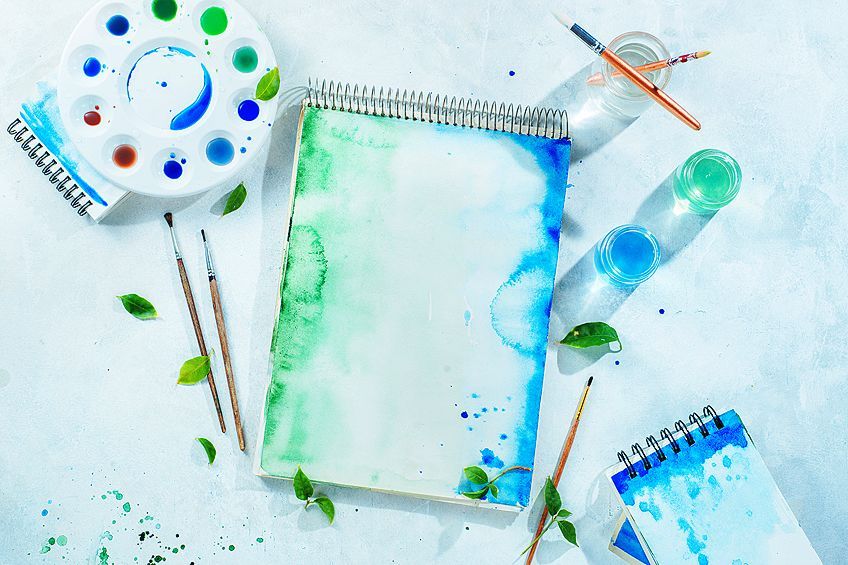
The Paint Viscosity of Watercolors
You can choose between three different viscosities of watercolor paints. They can come as opaque, transparent, and semi-transparent. The three different types offer different effects which you can play around with until you find the one you prefer.
Different Types of Watercolor Paints
There are two forms that watercolor paints come in, tubes or as a pan. The tubes are more intense in their colors and they are more suited for large-scale watercolor artworks. If you use a pan, they are more convenient to use, even on the go.
They can be painted directly from the pan itself and if they dry out, you can liven them up again by adding some water.
Watercolor Drying Times and Clean-Up
The amazing thing about watercolor paints is that they are so easy to wash away and clean up. Caring for the paint itself is so simple because there is a very minimal worry of the paint drying out. In fact, none at all. If it does, you need only splash a little bit of water over them and they are ready to go again.
Lightening Colors
One particular difference between watercolor and acrylic paint is how the colors are lightened between the paints. If you were to add white to lighten your blue watercolor paint, you will end up with a more pastel, muddy version than you anticipated. The best way to lighten the colors is by adding more water.
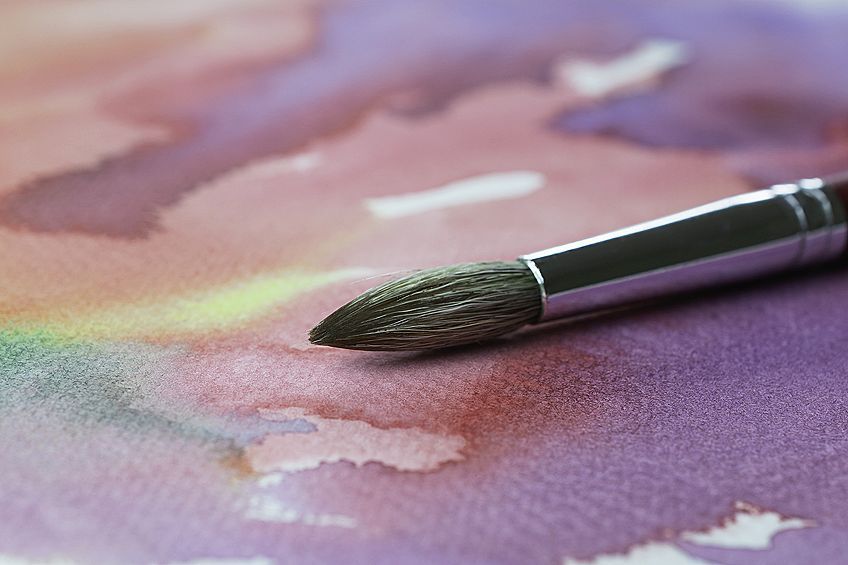
Watercolor Costs
This depends on the care you take for your paints. If you tend to leave the caps off, your paints will dry and need to be replaced which can be a costly affair. Luckily, as we have mentioned, watercolor does not matter whether the paint dries out because water will revive them.
Watercolor Surfaces
Unfortunately, watercolor paints are not suitable for every surface material under the sun. There are a few limitations with this medium, and this is one of them. The ideal surface for watercolors would be paper that is of a certain thickness and has been treated for this purpose.
There are some canvases that are designed specifically for watercolor paint, but not every canvas can be used because they have been treated otherwise and the watercolor will just run off the surface.
Watercolor Lightfastness
Have you ever noticed how your patio cushions have lost their vibrancy over the years? That is because the sun zaps the pigment right out of them, and the same can be said for paint. Both watercolor and acrylic paint will fade over time, but in terms of acrylic vs watercolor, watercolor is more prone to fading in the sunlight.
Approaching Watercolor Painting
The best approach to painting with watercolors is by adding layer upon layer. We advise you to start with the lighter colors and layer up in a darker shade each time. The darker colors are hard for the light colors to paint over, so they will end up getting lost in a muddy pool of pigments.
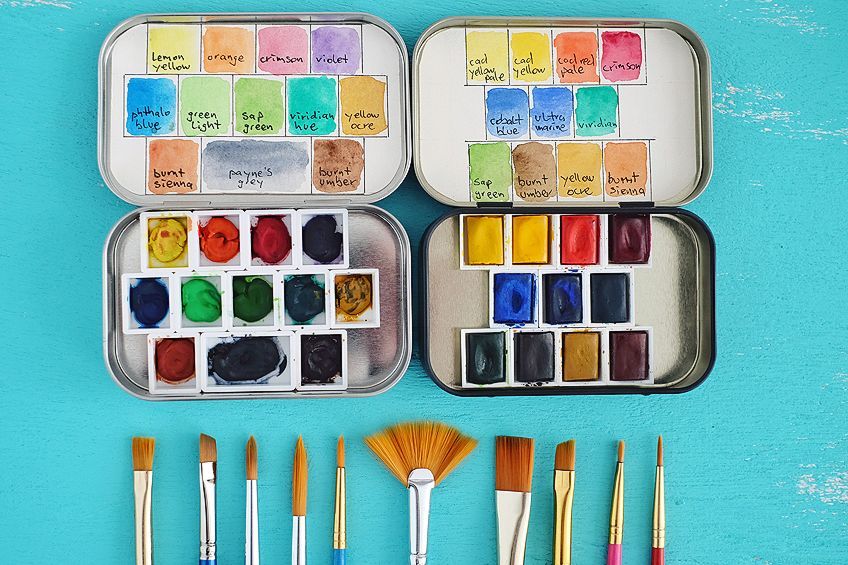
The different layers need to be thought of cleverly, which makes it a little more tricky than with acrylic art because you have to understand how the paint works in order to get the highlights and shadows down perfectly without making a mess of the paints and over saturating the paper you are working on. When storing your watercolor art, it is best suited in a glass frame and out of the sun.
The Properties of Acrylic Art Paints
Before you can make a decision for watercolor over acrylic paint, we have to talk about acrylic vs watercolor. Watercolor has some amazing benefits, but acrylic paint is on par with those, but in a different way. In order to understand acrylic art better, read this next section.
Paint Transparency: Acrylics
The transparency with acrylic paints is different from watercolor paints in that they are far thicker. You generally will not be able to see the paper or canvas you are painting on through the paint, but you can thin them out with some water until they look much like the effect that watercolor paints would give off.
Types of Acrylic Paints
The different vessels that acrylic paints come in are a choice of bottles, jars, or tubes. There are various consistencies of acrylic paints that offer different effects and drying times. The thicker the paint is, the longer it will take to dry, and the longer drying time is usually the better quality paint. If you are looking at techniques, an impasto technique is suited to thicker acrylic paints, and texturizing effects are suited to heavy-bodied pints. There are some acrylic paints that are reworkable in terms of their fluidity which is an added bonus, but the downside to this paint is that once it has dried, there is no going back.
In this case, watercolor vs acrylic is more in favor of watercolor. Acrylic is perfect as a mixed-media art, so you can add watercolor over acrylic paint and it will look beautiful and textured.
Acrylic Drying Times and Clean-Up
Watercolor paints are notorious for drying quite fast, but acrylic paints are not far behind them when it comes to drying time. Weather plays a massive role in the drying and curing of most paints, and with acrylic paints in particular, if the weather is warm and dry, the paint will have a very fast drying time. If the climate is cool or possibly humid, like at the equator, the paint might need more time to dry. Typically, acrylic paints will take ten to twenty minutes to dry.
Acrylic Paint Costs
Oil paints are the real budget bender in the art world, being much higher quality paint and much more costly. Acrylic paints are not the most expensive paint on the planet, but they do come with a certain amount of care to prolong their shelf life. If they dry out, there is no reusing the paint, like with watercolors only needing a splash of water.

Acrylic Lightfastness
If you remembered to read the label of the paint you bought you might remember a specification saying lightfastness. This implies the paint’s ability to withstand the sun’s rays and not fade if left exposed for too long.
Adding White Paint to Acrylic Paints
Say you have a certain color green, but you need to paint first who has various shades and shadows. In order to make an acrylic paint lighter, you need only add some more white paint to the mix.
Sometimes you can add yellow or some other lighter color to the mix to give it a different tinge, but still lighter green.
Acrylic Paint Surfaces
A big plus when it comes to acrylic painting is that you can choose from a large variety of surface materials to paint acrylic paints on. Some of the choices are canvas, glass, plastic, wood, and metal, to name but a few.
Acrylic Painting Techniques
When you are painting with acrylic paints, the color you choose may be quite deceiving at first for beginners, because the wet paint will be slightly darker than what it is when it dries. The molecules of the paint pigments change slightly as they dry out and they become darker.
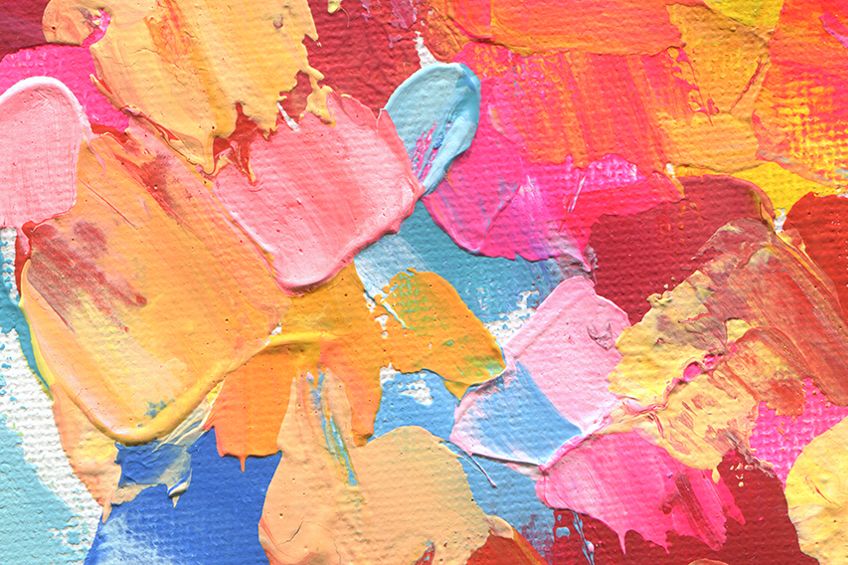
This might be a tricky aspect to learn as you are starting out with acrylic paints. There are types of acrylic paints that have a heavy texture, these are known as heavy-bodied paints and they can be used to add a beautiful texture that is similar to the effect that oil paints give off if you use a palette knife.
Comparing Acrylic vs. Watercolor
These two mediums are almost set at an unfair comparison because of the vast differences between them. That being said, they are definitely e to more approachable paint mediums to choose from so there is no judgment from us. They are also unbelievably beautiful, and regardless of their beginner friendliness, they produce some amazing art. All of this information might be super informative, but it is always helpful to have a summarized version for you to make a better and more informed decision for yourself.
| Acrylic Paint | Watercolor Paint | |
| Time For Drying | 10-20 minutes | 5-15 minutes |
| Viscosity | Opaque | Transparent |
| Binders | Plastic acrylic resin | Natural gum arabic |
| Cleaning Process | Soap and water | Water |
| Suitable surfaces | Paper, wood, glass, canvas, and others | Canvas and paper that is designed for watercolor |
| Making Colors Lighter | Add more white paint | Add more water |
| Lightfastness | Last longer than watercolors | Fades sooner than Acrylic paints |
| Dried appearance | Darker Color than wet color | Lighter Color than wet color |
| Cost | Quite affordable, brand dependent | Lasts longer so it is more affordable |
| Beginner Friendly | Easier to Learn than watercolor techniques | Beginner-friendly but hard to master |
And that brings our informative article on these two mediums to a close! When choosing Watercolor vs acrylic art for beginners, or even for professionals, it is up to you and your experienced tastes which medium you prefer. We hope we have helped you understand both a little bit better!
Frequently Asked Questions
Can Acrylic Paint Make Watercolor Effects?
Believe it or not, but the answer is yes, if you were to add some water to the acrylic paint you are working with, then the pain will give the effect of watercolor paints! This is quite helpful if you love the look of watercolor but do not want to paint on watercolor paper.
Can Acrylic Be Painted Over With Watercolor?
Watercolor over acrylic paint has a beautiful and textured effect that can elevate the depth of your artwork. Watercolor is very watery so it is able to slide over most mediums very well. Just Ensure that the acrylic paint has dried properly before you start with the watercolor.
Acrylic vs. Watercolor: Which Is Easier to Use?
Both of the paints are so different in their natures that it is not which is easier, but which you prefer. When it comes down to it, watercolors have harder techniques to learn, but both paints are beginner-friendly.
Will Watercolor Paper Work With Acrylic Paint?
Watercolor paint is the paint that needs specific surfaces. Acrylic paints are versatile in that they can be printed on various surfaces.
Does Acrylic or Watercolor Paint Dry Faster?
Whatever the weather is a common phrase in most arts and crafts and even industrial forms of trade. If You are working in a more hot and dry climate your paint will dry faster and in reverse for humid or cold climates. Regardless, watercolor paints will dry faster than acrylic paints.
Larissa Meyer is a 32-year-old mother from Michigan and creative spirit since childhood. Her passion for painting and drawing has led her to an education as an illustrator and a career as a freelance graphic designer. She has a Bachelor of Fine Arts in Illustration and a degree in Graphic Design. Larissa is a talented artist who is able to master a wide range of styles and techniques to bring her artistic vision to life. Her greatest passion is currently fluid painting and epoxy resin art. Larissa’s love for art and her knowledge and experience in illustration make her the perfect Creative Director for our fluid-painting.com team. She is the creative head of our team and shares her passion and knowledge with our community through articles and tutorials.
As a mother of a 2-year-old daughter, Larissa also understands the importance of fostering creativity in early childhood. She uses her experience and knowledge to help other parents inspire their children and develop their artistic skills as well.
Learn more about Larissa Meyer and about us.

